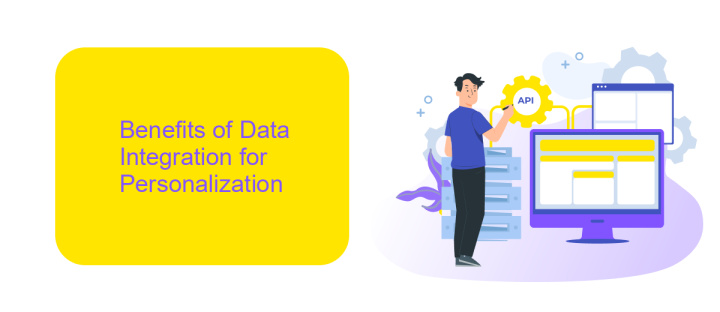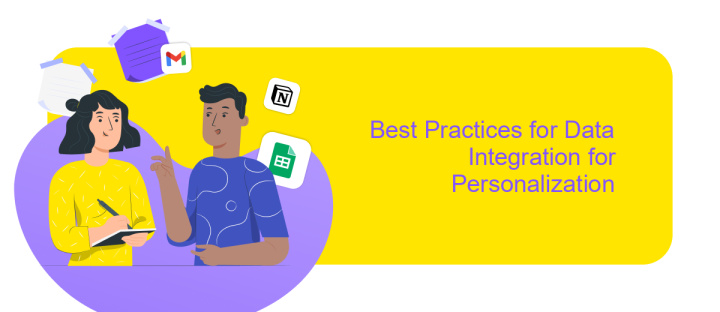Data Integration for Personalized Experiences
In today's digital era, data integration plays a crucial role in crafting personalized experiences for users. By seamlessly combining data from various sources, businesses can gain deeper insights into customer preferences and behaviors. This enables them to deliver tailored content and services, enhancing user satisfaction and loyalty. Explore how effective data integration can transform your approach to personalization in this insightful article.
Introduction: The Importance of Data Integration for Personalized Experiences
In today's digital age, personalized experiences are paramount for customer satisfaction and loyalty. Data integration plays a crucial role in achieving this by merging information from various sources to create a unified view of the customer. This comprehensive perspective allows businesses to tailor their services and communications to meet individual needs effectively.
- Enhanced customer insights: Combining data from multiple touchpoints provides a deeper understanding of customer behavior and preferences.
- Improved decision-making: Integrated data enables more accurate and timely decisions based on comprehensive information.
- Seamless customer experiences: Consistent and personalized interactions across all channels enhance customer satisfaction and retention.
Ultimately, data integration is the backbone of creating personalized experiences that resonate with customers. By leveraging integrated data, businesses can deliver more relevant, timely, and engaging interactions, fostering stronger relationships and driving growth. As the demand for personalization continues to rise, the importance of robust data integration strategies cannot be overstated.
Benefits of Data Integration for Personalization

Data integration plays a crucial role in creating personalized experiences by consolidating information from various sources into a unified view. This comprehensive perspective allows businesses to gain deeper insights into customer preferences, behaviors, and needs. By leveraging these insights, companies can tailor their products, services, and communications to better align with individual customer expectations, thereby enhancing customer satisfaction and loyalty.
Moreover, efficient data integration streamlines the process of data management, reducing redundancy and ensuring data accuracy. Tools like ApiX-Drive facilitate seamless data integration by automating the transfer of data between different platforms, saving time and reducing the risk of errors. This automation enables businesses to maintain up-to-date and consistent data, which is essential for delivering timely and relevant personalized experiences. Consequently, companies can achieve a competitive edge by offering more targeted and meaningful interactions with their customers.
Challenges and Considerations in Data Integration

Integrating data for personalized experiences presents several challenges and considerations that must be addressed to ensure successful implementation. Organizations need to navigate these complexities to provide seamless and effective personalized services.
- Data Quality and Consistency: Ensuring the accuracy and uniformity of data from various sources is critical.
- Data Privacy and Security: Protecting sensitive information and complying with regulations like GDPR is paramount.
- Scalability: The system must handle increasing volumes of data efficiently as the organization grows.
- Interoperability: Integrating disparate systems and technologies can be challenging but is necessary for a cohesive data ecosystem.
- Real-Time Processing: Providing personalized experiences often requires real-time data analysis and integration.
Addressing these challenges requires a strategic approach, leveraging advanced technologies and best practices. Organizations must invest in robust data integration solutions and foster a culture of continuous improvement to stay ahead in delivering personalized experiences.
Best Practices for Data Integration for Personalization

Effective data integration is crucial for creating personalized experiences. To achieve this, it’s essential to ensure that data from various sources is accurately combined and harmonized. This process not only enhances the quality of insights but also enables more tailored interactions with users.
One of the best practices is to maintain data consistency across all platforms. This involves regular updates and synchronization of data to prevent discrepancies. Additionally, leveraging scalable and flexible data integration tools can help manage the increasing volume and variety of data.
- Ensure data quality by implementing robust validation processes.
- Utilize APIs for seamless data exchange between systems.
- Adopt a centralized data repository for unified access.
- Implement data security measures to protect sensitive information.
- Continuously monitor and optimize data integration workflows.
By following these best practices, organizations can enhance their ability to deliver personalized experiences. Proper data integration not only improves user satisfaction but also drives better decision-making and business outcomes. Investing in the right strategies and tools is essential for staying competitive in today’s data-driven landscape.


Case Studies and Examples of Data Integration for Personalized Experiences
One compelling example of data integration for personalized experiences is seen in the retail industry. A leading e-commerce platform integrated customer data from various touchpoints, including website interactions, purchase history, and social media engagement. By leveraging this comprehensive dataset, the company was able to create highly personalized marketing campaigns, recommend products tailored to individual preferences, and enhance customer loyalty. This integration not only boosted sales but also significantly improved customer satisfaction.
In the healthcare sector, data integration plays a crucial role in delivering personalized patient care. Hospitals and clinics use integrated data from electronic health records (EHRs), wearable devices, and patient feedback to tailor treatment plans. For instance, ApiX-Drive enables seamless integration of patient data from multiple sources, ensuring that healthcare providers have a holistic view of each patient’s health. This results in more accurate diagnoses, effective treatments, and improved patient outcomes. Such integrations demonstrate the transformative potential of data integration in creating personalized experiences across various industries.
FAQ
What is data integration for personalized experiences?
How does data integration improve customer experiences?
What are the common challenges in data integration for personalization?
How can businesses automate the data integration process?
What types of data are typically integrated for personalized experiences?
Apix-Drive is a simple and efficient system connector that will help you automate routine tasks and optimize business processes. You can save time and money, direct these resources to more important purposes. Test ApiX-Drive and make sure that this tool will relieve your employees and after 5 minutes of settings your business will start working faster.

